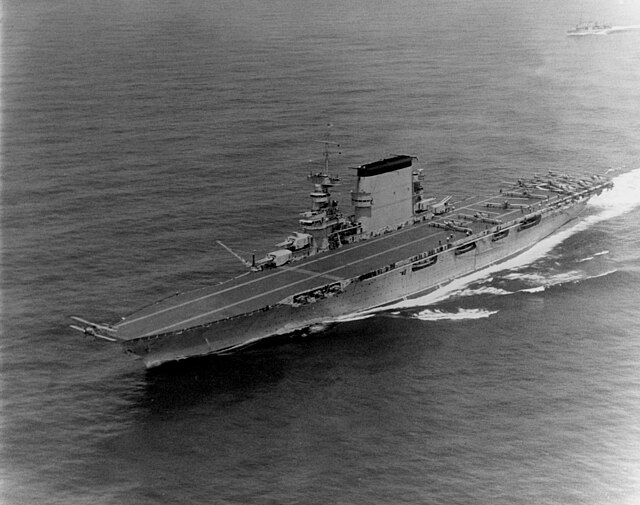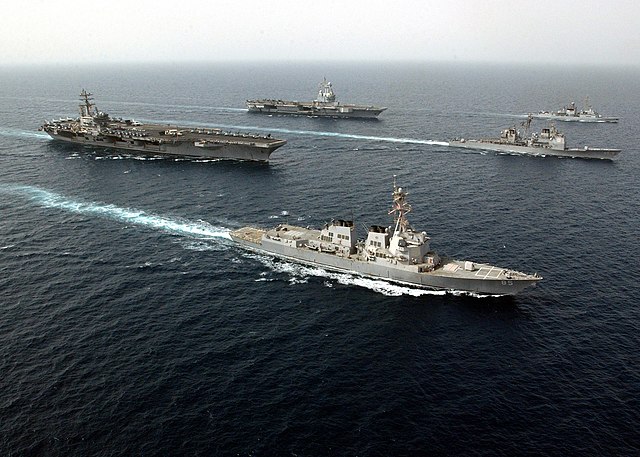Lexington-class aircraft carrier
The Lexington-class aircraft carriers were a pair of aircraft carriers built for the United States Navy (USN) during the 1920s, the USS Lexington (CV-2) and USS Saratoga (CV-3). The ships were built on hulls originally laid down as battlecruisers after World War I, but under the Washington Naval Treaty of 1922, all U.S. battleship and battlecruiser construction was cancelled. The Treaty, however, allowed two of the unfinished ships to be converted to carriers. They were the first operational aircraft carriers in the USN and were used to develop carrier aviation tactics and procedures before World War II in a series of annual exercises.
USS Lexington before World War II
Rear Admiral David W. Taylor (left), Chief of the Bureau of Construction and Repair, and Rear Admiral John K. Robison (right), Chief of the Bureau of Engineering, hold a model of the battlecruiser above a model of the proposed conversion to an aircraft carrier at the Navy Department on 8 March 1922.
Lexington firing her 8-inch guns, 1928
Lexington (top) and Saratoga alongside the smaller Langley at Puget Sound Navy Yard in 1929. To aid recognition, Saratoga had a black stripe painted on her funnel.
An aircraft carrier is a warship that serves as a seagoing airbase, equipped with a full-length flight deck and facilities for carrying, arming, deploying, and recovering aircraft. Typically, it is the capital ship of a fleet, as it allows a naval force to project air power worldwide without depending on local bases for staging aircraft operations. Carriers have evolved since their inception in the early twentieth century from wooden vessels used to deploy balloons to nuclear-powered warships that carry numerous fighters, strike aircraft, helicopters, and other types of aircraft. While heavier aircraft such as fixed-wing gunships and bombers have been launched from aircraft carriers, these aircraft have not landed on a carrier. By its diplomatic and tactical power, its mobility, its autonomy and the variety of its means, the aircraft carrier is often the centerpiece of modern combat fleets. Tactically or even strategically, it replaced the battleship in the role of flagship of a fleet. One of its great advantages is that, by sailing in international waters, it does not interfere with any territorial sovereignty and thus obviates the need for overflight authorizations from third-party countries, reduces the times and transit distances of aircraft and therefore significantly increases the time of availability on the combat zone.

Four modern aircraft carriers of various types—USS John C. Stennis, Charles de Gaulle (French Navy), USS John F. Kennedy, helicopter carrier HMS Ocean—and escort vessels, 2002
Comparison of aircraft carriers
French aircraft carrier Charles de Gaulle (rear), and US Navy carrier USS Ronald Reagan conducting joint operations in the Persian Gulf; both with the CATOBAR configuration.
USS Abraham Lincoln (CVN-72) a United States Navy fleet carrier, also often referred to as a supercarrier, seen here underway in 2019 crossing the Atlantic.








